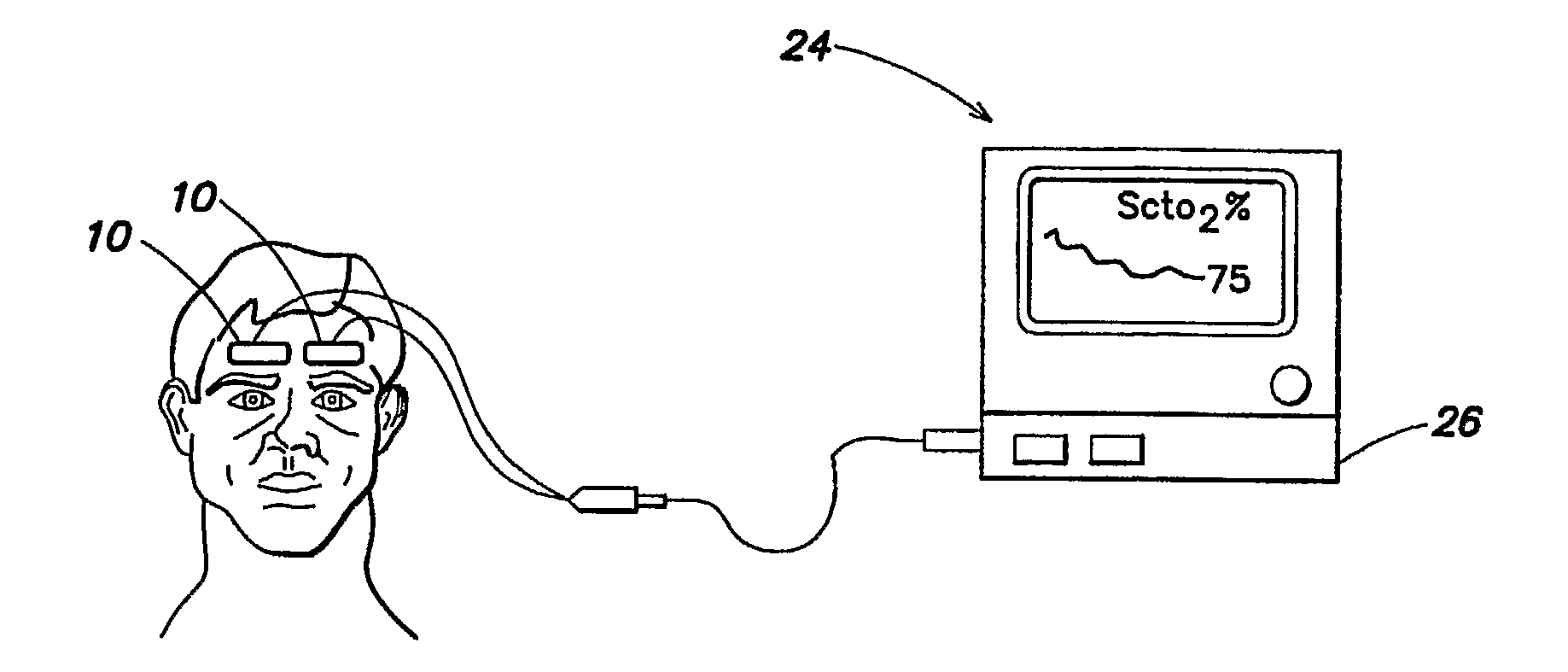Method and apparatus for spectrophotometric based oximetry
a spectrophotometric and oximetry technology, applied in the field of spectrophotometric based oximetry, can solve the problems of detectors more than forty (40) millimeters from the source, inconvenient operation, and inability to provide useful information in relation to cerebral oxygenation
- Summary
- Abstract
- Description
- Claims
- Application Information
AI Technical Summary
Benefits of technology
Problems solved by technology
Method used
Image
Examples
Embodiment Construction
[0032]Referring now to the drawings, an embodiment of a NIRS sensor assembly 10 is shown in FIGS. 1-4. The NIRS sensor assembly 10 includes a pad 12, a light source 14, a near light detector 16, a far light detector 18, a component tray 20, and a cover 22. The NIRS sensor assembly 10 is adapted for use with a NIRS system 24 that includes a processor 26 for providing signals to and / or receiving signals from the NIRS sensor assembly 10. For purposes of providing a detailed description of the present NIRS sensor assembly 10, the sensor assembly 10 will be described herein as being used in connection with the NIRS system 24 described in U.S. Pat. No. 6,456,862 and U.S. Pat. No. 7,071,701, which are examples of acceptable NIRS systems. The NIRS sensor assembly 10 is not, however, limited to use with any particular NIRS system.
[0033]The pad 12 includes a first aperture 28 for receiving the light source 14, a second aperture 30 for receiving the near light detector 16, and a third aperture...
PUM
 Login to View More
Login to View More Abstract
Description
Claims
Application Information
 Login to View More
Login to View More - R&D
- Intellectual Property
- Life Sciences
- Materials
- Tech Scout
- Unparalleled Data Quality
- Higher Quality Content
- 60% Fewer Hallucinations
Browse by: Latest US Patents, China's latest patents, Technical Efficacy Thesaurus, Application Domain, Technology Topic, Popular Technical Reports.
© 2025 PatSnap. All rights reserved.Legal|Privacy policy|Modern Slavery Act Transparency Statement|Sitemap|About US| Contact US: help@patsnap.com



